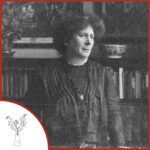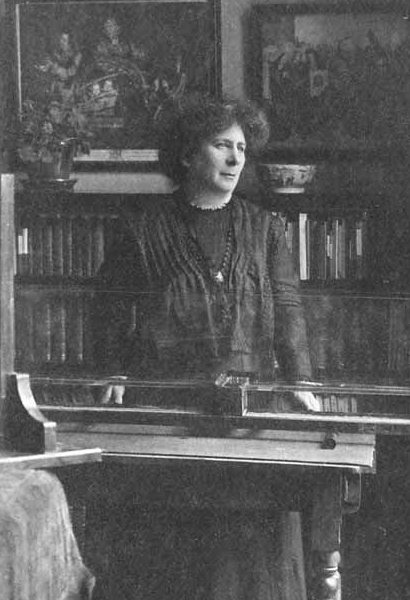

Birth: April 28, 1854
Death: August 23, 1923
Specialty: Physics
Major Contributions:
First woman to read her own paper before Institution of Electrical Engineers and Royal Society
Elected first female member of Institution of Electrical Engineers
Invented Ayrton fan, or flapper, used in trenches in the First World War to dispel poison gas
Image via the Jewish Women’s Archive
Named Phoebe Sarah Marks at her birth, Hertha Marks Ayrton changed her first name to what began as a nickname taken from a popular book at the time about an ambitious heroine. Her first invention, a line-divider patented in 1884, was an engineering drawing instrument used to divide a line into any number of equal parts for enlarging and reducing figures. The device was used primarily by artists but was a useful tool for architects and engineers alike.
Much of her work, done in equal collaboration with her husband, centered on electricity and the electric arc lighting that was being widely used for public areas. In 1895 she wrote a series of articles for the Electrician explaining that these lights flickered and made hissing noises due to oxygen coming into contact with the rods used to create the arc.
Four years later she became the first woman to read her own paper before the Institution of Electrical Engineers and was elected the first female member of this body shortly thereafter. She asked to read her paper before the Royal Society but was denied due to her gender, although they did allow her paper to be read by a male member. Published in 1902, The Electric Arc was a summary of her research and helped to cement her contributions to the field of electrical engineering.
Her husband passed away in 1908 and her research interests changed to trying to understand how sand ripples are created by the oscillations of water. During World War I, when she learned about the chemical gas attacks on British troops, she used her research to tackle this issue. She designed the Ayrton fan, which while effective, met with resistance because “fans were something ladies used” but she fought for her idea and eventually over 100,000 automated fans were sent to the western front.
During her lifetime she would register 26 patents, five on mathematical dividers, 13 on arc lamps and electrodes and the rest on the propulsion of air. Voted as one of the most influential British women in the history of science by the Royal Society in 2010, Ayrton was also honored by a Google Doodle in 2016.
Written by Angela Goad
Sources:
Jewish Women’s Archive: Hertha Ayrton
Biographies of Women Mathematicians: Hertha Marks Ayrton
History of Scientific Women: Hertha MARKS-AYRTON
See Also:
Google Doodle: Hertha Marks Aryton’s 162nd Birthday
